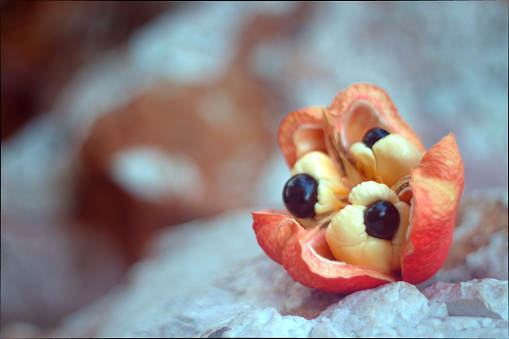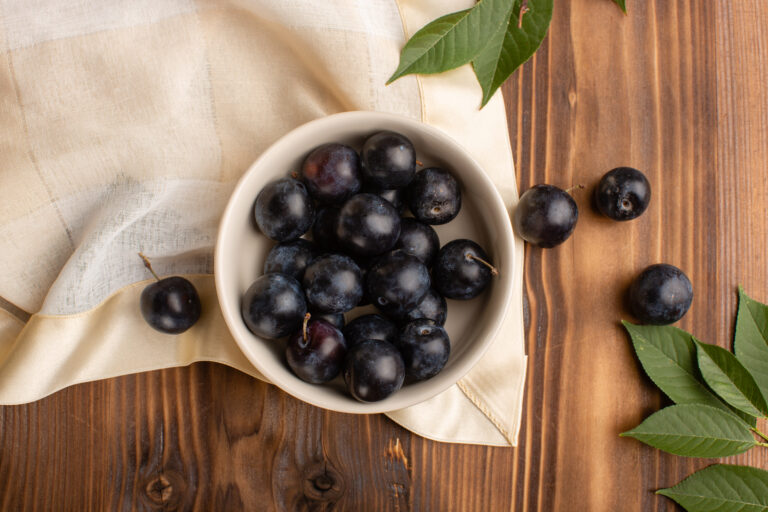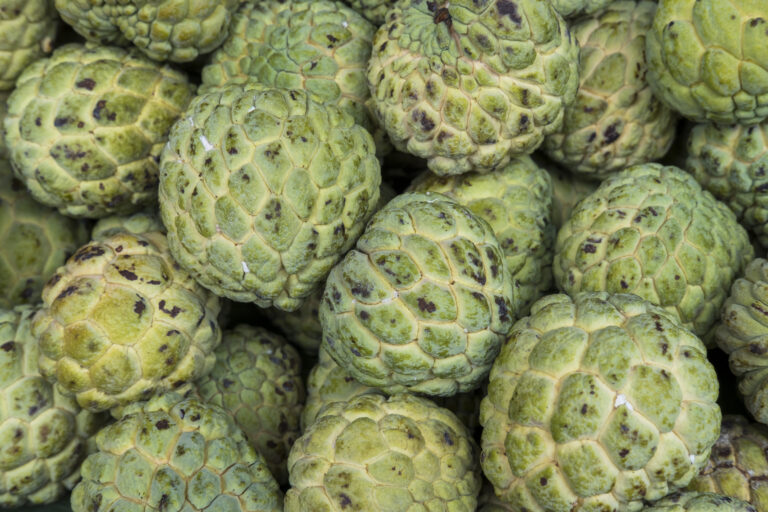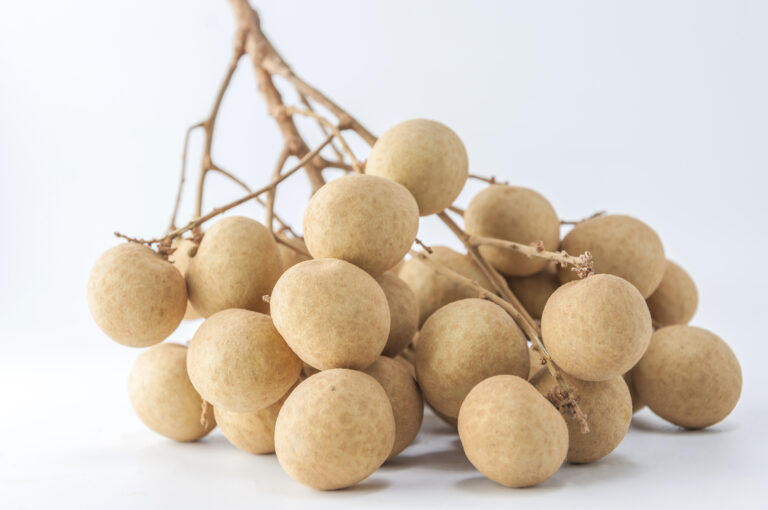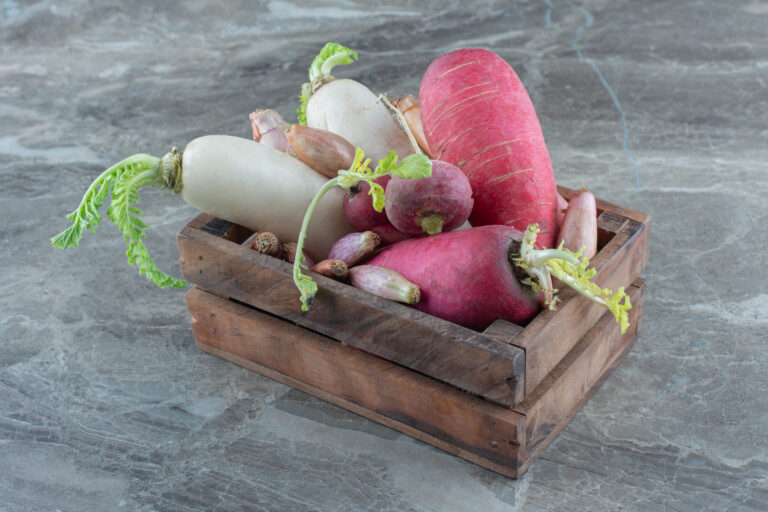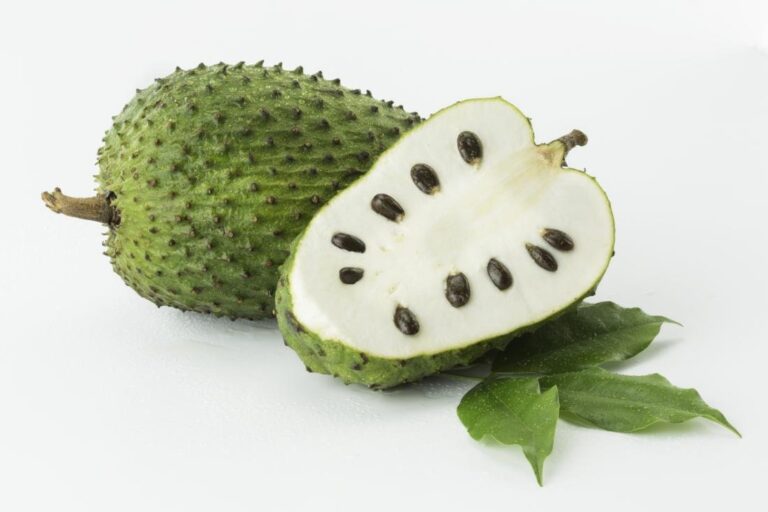Overview
Ackee fruit is scientifically known as Blighia sapida. It is a tropical fruit that hails from the Sapindaceae family.
Native to West Africa, this fruit has found its way into various cuisines and cultures around the world.
However, it is particularly renowned as the national fruit of Jamaica, where it plays a significant role in traditional dishes such as the famous “Ackee and Saltfish.”
The ackee tree is an evergreen that can reach up to 10 meters in height. The fruit itself is pear-shaped and turns bright red to orange when fully ripe.
When opened, the ackee reveals three large, shiny black seeds surrounded by soft, creamy or yellow flesh. The seeds are inedible and must be discarded, while the fleshy arils are the edible part of the fruit.

Nutritional Content of Ackee Fruit
Ackee fruit is a nutritious tropical fruit that provides a variety of essential nutrients. The nutritional content of ackee fruit per 100 grams is approximately as follows:
- Calories: 151 kcal
- Water: 78.9 g
- Protein: 2.9 g
- Total Fat: 15.3 g
- Saturated Fat: 2.3 g
- Monounsaturated Fat: 8.3 g
- Polyunsaturated Fat: 2.5 g
- Carbohydrates: 8.5 g
- Dietary Fiber: 2.8 g
- Sugars: 0.6 g
- Vitamins:
- Vitamin C: 36.3 mg (61% of the Recommended Daily Allowance – RDA)
- Vitamin A: 2 µg (25% RDA)
- Folate (B9): 14 µg (4% RDA)
- Minerals:
- Potassium: 256 mg (7% RDA)
- Phosphorus: 42 mg (6% RDA)
- Calcium: 24 mg (2% RDA)
- Iron: 1 mg (1% RDA)
- Other Nutrients:
- Niacin (B3): 0.6 mg (4% RDA)
- Riboflavin (B2): 0.1 mg (4% RDA)
- Thiamine (B1): 0.1 mg (3% RDA)
- Vitamin B6: 0.1 mg (3% RDA)
- Magnesium: 29 mg (3% RDA)
These values are approximate and can vary based on factors such as ripeness and growing conditions. Additionally, percentages of the Recommended Daily Allowance (RDA) are based on a standard adult diet of 2000 calories per day. Ackee is a nutritious fruit that provides a good balance of macronutrients and essential vitamins and minerals.
Healthy Benefits of Ackee Fruit
The following health benefits are associated with the consumption of properly prepared ackee fruit:
- Rich in Nutrients: Ackee is a good source of essential nutrients, including vitamin C, vitamin A, vitamin B6, niacin, riboflavin, thiamine, and folate. These vitamins play crucial roles in supporting overall health, immune function, and metabolism.
- Dietary Fiber Content: Ackee is a good source of dietary fiber, which is important for digestive health. Fiber can help prevent constipation, promote regular bowel movements, and contribute to a healthy digestive system.
- Healthy Fats: Ackee contains healthy monounsaturated fats, which can be beneficial for heart health. These fats may help reduce levels of bad cholesterol (LDL cholesterol) and lower the risk of cardiovascular diseases.
- Protein Content: Ackee provides a moderate amount of protein, which is essential for the body’s growth, repair, and maintenance. Including protein-rich foods in the diet can help support muscle health and overall bodily functions.
- Antioxidant Properties: The presence of antioxidants in ackee, such as vitamin C, can help neutralize free radicals in the body. Free radicals are molecules that can cause oxidative stress and damage to cells, contributing to aging and various chronic diseases. Antioxidants help combat this damage and support overall health.
It’s crucial to emphasize that ackee must be prepared and consumed properly to ensure safety. The unripe fruit contains hypoglycin A, which can cause Jamaican vomiting sickness if ingested in large amounts.
Uses of Ackee Fruit
Ackee fruit, with its unique flavor and texture, is a versatile ingredient used in various culinary applications. Here are some common uses of ackee fruit:
- National Dish:
- In Jamaica, ackee and saltfish are the national dishes. The fruit is sautéed with salted codfish, onions, tomatoes, and spices, creating a flavorful and iconic dish enjoyed at breakfast or any meal.
- Stir-Fries and Curries:
- Ackee is often incorporated into stir-fries and curries, adding a distinctive taste and texture to these dishes. Its mild flavor allows it to blend well with various spices and ingredients.
- Vegetarian and Vegan Dishes:
- Ackee is a popular ingredient in vegetarian and vegan recipes, offering a plant-based alternative to meat. It can be used as a protein source in dishes like ackee stir-fry or ackee and vegetable curry.
- Side Dish:
- Ackee can be prepared as a side dish to complement a variety of main courses. It is commonly paired with rice and peas, breadfruit, dumplings, or other traditional Caribbean side dishes.
Outlook
In conclusion, ackee fruit transcends its tropical origins, becoming a culinary and cultural ambassador. Its unique taste, nutritional richness, and cultural symbolism make it a valuable addition to global cuisine.
I hope you got the answer to your query (Ackee Fruit). Also, check out Carb Cycling Meal Plan.

